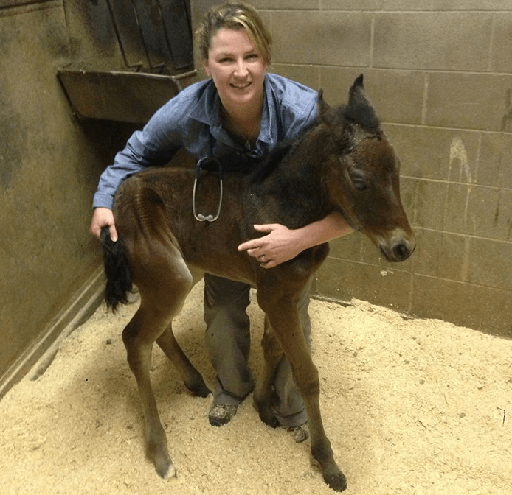 THE JOINT LURKER
THE JOINT LURKER
This most cringe-worthy wound of them all. Let’s be very clear, a wound near a joint is and will always be serious. If it appears the skin has been cut or split all the way through (“full-thickness”) – or you suspect a puncture and cannot truly identify the depth of the wound – always call your veterinarian for an assessment. A wound in the neighbourhood of a joint can communicate the outside world with the underlying joint as well as it’s vulnerable joint fluid & cartilage. Once bacteria gains entry to a joint, the consequences of a joint infection can be career ending or even fatal for a horse. With proper early intervention, the consequences can be ameliorated. It is always better to be safe than sorry.
• Take inventory of the location of the wound & call you veterinarian
• Gently cleanse the wound with sterile saline only
• Do not apply cleansing agents (Chlorohexidine, betadine, soaps)
• Cover with a non-stick pad or light wrap or stable bandage until your veterinarian arrives.
 THE FACE WOUND
THE FACE WOUND
Hurray! These wounds heal wonderfully! The face has excellent blood flow (very vascular) thus these wounds heal very well. However, these wounds are often sustained the same way a prize-fighter splits open their face – blunt trauma, so often an assessment for trauma to the skull, sinuses or eyes will be important for your veterinarian to perform. And because the face is difficult to wrap, if the skin appears split-open stitches even for a small wound can be very valuable to prevent contamination.
• Cleanse with sterile saline
• Assess for any bleeding from the nose or change in noise or breathing pattern
• Assess for any depression in the face or sinus (indicating a fracture of the sinus)
• Assess for any tearing, squinting or swelling of the eyes
• Call you veterinarian and discuss your findings
• Apply Alu-Spray (caution around the eyes – can be sprayed onto gauze and dabbed if needed) or a topical wound care if deemed appropriate.

FIVE MOST COMMON WOUND MISTAKES I ENCOUNTER
• Applying the wrong topical cleanser. If you are using a cleanser (for example: betadine, cholorhexidine/nolvasan) – these need to be substantially diluted or potentially not used at all depending on the type of wound.
• Sterile saline is really all your vet wants you to clean your wound with. There is very little value in painting a wound purple with Blue-Kote or slapping a thick layer of ointment on before the wound is evaluated. Often less is more in these early wound care moments.
• Do not flush/squirt anything into a wound – often to clean a wound, owners drive bacteria deeper into a wound which can delay healing. Let your veterinarian do the flushing with the right tools and educated end-game.
• Waiting too long – don’t be shy, make the call and ask some questions. The wound may not require a visit and you’ll never regret the conversation. Your horse will thank you.
• Better to leave a wound uncovered while you wait for the vet than to apply gauze or a material that will stick to the wound. Cotton gauze is never a good option. A material that sticks to the wound will be uncomfortable for the horse when it’s removed and is tedious for your veterinarian to remove. Non-stick pads only or nothing at all!




